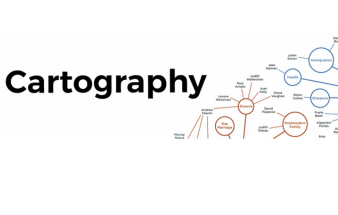Title of Project :
Cartographie théorique des enjeux et stratégies durables dans les concours canadiens de design pour l’espace public (2003-2011)
Grant Organization :
Fonds Quebecois de recherche société et culture
Project leader :
Carmela Cucuzzella
Matthew MacKay-Lyons (Concordia University)
Lupe Perez (Concordia University)
Research Abstract:
In 1998, the US Green Building Council (USGBC) introduced Leadership in Energy and Environmental Design (LEED). In 2003, this environmental standard was launched in Canada by the Canada Green Building Council (CaGBC). Since then, architectural projects and in particular, architectural competitions in Canada have increasingly adopted this standard to address sustainability. However, as this standard only focuses on the environmental pillar of sustainability, the question that arises is: how have architects and planners dealt with the other pillars of sustainability in their projects? More specifically: how have the questions and strategies regarding sustainability evolved since 2003 in Canadian architectural competitions – in the competition brief, in the proposals by the competing architects and in the way these projects are finally judged in order to select the winning project? The objective of this research is to chart out these developing questions, concerns and strategies by constructing a map (cartography) and categorizing these within the four sustainability pillars (culture, social, environmental and economic) for the period of 2003-2011. This mapping will provide a first perspective of how public planners, architects and the jurors of public design competitions address the sustainability concerns in Canada. The pertinence of this research is that the results may help improve the way in which the sustainability issues are addressed in upcoming Canadian design projects for planning public space through this mapping – a mapping which provides an understanding of the current direction.
Bibliography:
Boudon, Pierre. 2008. Sémiotique et architecture : quel apport offrecette discipline à une science du projet? (volume d’hommage à Alain Rénier): Numéro spécial des Nouveaux Actes Sémiotiques, jan. 2008, no.111.
Chupin, Jean--Pierre. 1998. Le projet analogue: les phases analogiques du projet d’architecture en situation pédagogique, Faculté de études supérieures, Université de Montréal, Montreal.
Chupin, J.-P.. 2008. Documenting Competitions, Contributing to Research, Archiving Events. In Architecture et archives numériques, edited by F. W. D. Peyceré. Genève: Infolio.
Chupin, Jean--Pierre, Denis Bilodeau, and Georges Adamczyk. 2002. Reflective Knowledge and Potential Architecture. InARCC/AEEA Conference on Architectural Research, edited by M. B. L.Fontein, S. Hanrot et al. McGill University School of Architecture.
Chupin, Jean--Pierre, Anne Cormier, Denis Bilodeau, Georges Adamczyk, and Jacques Lachapelle. 2004. Concours d’architecture, pratiques réflexives et transferts analogiques. In Journées européennes de la recherche architecturale et urbaine. Merseille.
Cucuzzella, Carmela. 2009. The Limits of Current Evaluation Methods in a Context of Sustainable Design: Prudence as a New Framework. International Journal of Design Engineering 2 (3):243-- 261.
Cucuzzella, C.. 2009. What Does Complexity have to do With Sustainable Design? Design Principles and Practices: An International Journal 3 (3):277--290.
Cucuzzella, C.. 2011. Design Thinking and the Precautionary Principle: Development of a Theoretical Model Complementing Preventive Judgment for Design for Sustainability enriched through a Study of Architectural Competitions adopting LEED, Faculté de l’aménagement, Université de Montréal, Montreal.
De Biasi, P.M. 1990. Pour une analyse génétique des techniques de projet et du processus de conception en architecture (Étude de genèse des premiers dessins du projet de F. Montès 20/28 rue Ramponneau, Paris 1986--1990). Paris: Direction de l’architecture.
Ehrlich, Paul R., and John P. Holdren. 1971. Impact of Population Growth. Science 171:1212--1217. Ellul, J. 1987. Le bluff technologique. Paris: Hachette. Fisher, Thomas. (2008). Architectural Design and Ethics: Tools for Survival: Architectural Press, Elsevier.
Guy, Simon, and Steven A. Moore. 2005. Reflection and Engagement: Towards Pluralist Practices of Sustainable Architecture.In Sustainable Architectures: Cultures and Natures in Europe and North America, edited by S. Guy and S. A. Moore. New York and London: Spon Press.
Harper, Thomas L., and Stanley M. Stein. 1992. The Centrality of Normative Ethical Theory to Contemporary Planning Theory.Journal of Planning Education and Research 11 (2):105--116.
Heidegger, Martin. 1977. The Question Concerning Technology and Other Essays, trans. William Lovitt. New York: Harper & Row.
Jensen, A.A., L. Hoffman, B.T. Møller, A. Schmidt, K. Christiansen, J. Elkington, and F. van Dijk. 1997. Life Cycle Assessment A guide to Approaches, Experiences and Information Sources. European Environment Agency, Environmental Issues Series 6.
Jolliet, O., M. Saadé, and P. Crettaz. 2005. Analyse du Cycle de vie : Comprendre et réaliser un écobilan. Lausanne: Presses Polytechniques et Universitaires Romandes.
Jonas, H. 1985. The Imperative of Responsibility: In Search of an Ethics for the Technological Age. Translated by H. J. w. t. c. o. D. Herr. Chicago: University of Chicago Press.
LEED Canada. 2004. LEED Green Building Rating System and Addendum for New Construction and Major Renovations, Version 1.0 (LEED Canada--NC 1.0): Canada Green Building Council.
Moore, Steven A., and Nathan Engstrom. 2005. The social construction of ‘green building’ codes: Competing models by industry, government and NGOs. In Sustainable Architectures: Cultures and Natures in Europe and North America, edited by S. Guy and S. A. Moore. New York and London: Spon Press.
O’Riordan, Timothy, and Andrew Jordan. 1995. The Precautionary Principle, Science, Politics and Ethics: The Centre for Social and Economic Research on the Global Environment (CSERGE).
Rowe, Peter. 1987. Design Thinking. Cambridge: MIT Press.
Tukker, A. 2002. Risk Analysis, Life Cycle Assessment--The Common Challenge of Dealing with the Precautionary Frame (Based on the Toxicity Controversy in Sweden and the Netherlands). Risk Analysis 22:821--832.
Udo de Haes, Helias A., and Martijn Van Rooijen. 2005. Life Cycle Approaches: A road from analysis to practice, edited by D. o. T. United Nations Environment Programme, Industry and Economics (DTIE) Production and Consumption Unit: UNEP/SETAC Life Cycle Initiative.
Wackernagel, M., and W. Rees. 1996. Our Ecological Footprint, Reducing Human Impact on the Earth. British Columbia: New Society Publishers.
WBCSD. 2000. Eco--Efficiency: Creating More Value with Less Impact. Geneva: World Business Council for Sustainable Development.
Whiteside, K.H. 2006. Precautionary Politics: Principle and Practice in Confronting Environmental Risk. Cambridge: The MIT Press.

